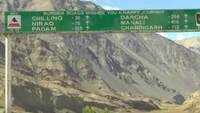
Udhagamandalam: The International Vulture Awareness Day was observed in the Mudumalai Tiger Reserve (MTR) buffer zone in the Nilgiris on Saturday to create awareness among the field staff of the forest department and residents.
The Sigur range, which falls under MTR-buffer zone along the Thengumarahada region, is the largest dwelling place of vultures in the Nilgiris. The open forest and scrub jungles of the range, spread over 18,000 hectares, offer vultures a safe sanctuary. Due to its proximity to the migratory paths of predators such as tigers and leopards, the range has enough carcasses for the scavenging birds.
“With open forests, the range offers easy visibility for spotting carcasses. There is no food scarcity for vultures,” Sigur forest range officer Murali said.
There are no vultures in the thick and canopied forests of MTR core-zone and other forest ranges in the Nilgiris. “There is no food scarcity in the MTR-core zone also. But the core-zone is a shrub forest that offers low visibility. Hence there is not many vultures there. The birds determine their prey by sight and not through smell,” Murali told TOI.
In the last 10 years, there has been no decline in vulture population in the region, though it has been declining in other parts of the country. “In fact, there is a slow growth in vulture population here,” said the official.
Of the nine types of vultures in India, five, such as white-rumped vulture, long-billed vulture, red-headed vulture, Egyptian vulture and cinereous vulture can be spotted in the Sigur range, which accounts for as many as 200 vultures, mainly white-rumped vultures.
Asked about the conservation measures taken, Murali said, “No special measures have been taken. As it is a tiger reserve, by taking measures to conserve the predators and the prey, we can make vultures survive. Also, with no livestock carcasses, vultures here fare safe from diclofenac, which is toxic to them.”
Vultures also play an important role in preventing spread of epidemics and curbing water pollution.
The Sigur range, which falls under MTR-buffer zone along the Thengumarahada region, is the largest dwelling place of vultures in the Nilgiris. The open forest and scrub jungles of the range, spread over 18,000 hectares, offer vultures a safe sanctuary. Due to its proximity to the migratory paths of predators such as tigers and leopards, the range has enough carcasses for the scavenging birds.
“With open forests, the range offers easy visibility for spotting carcasses. There is no food scarcity for vultures,” Sigur forest range officer Murali said.
There are no vultures in the thick and canopied forests of MTR core-zone and other forest ranges in the Nilgiris. “There is no food scarcity in the MTR-core zone also. But the core-zone is a shrub forest that offers low visibility. Hence there is not many vultures there. The birds determine their prey by sight and not through smell,” Murali told TOI.
In the last 10 years, there has been no decline in vulture population in the region, though it has been declining in other parts of the country. “In fact, there is a slow growth in vulture population here,” said the official.
Of the nine types of vultures in India, five, such as white-rumped vulture, long-billed vulture, red-headed vulture, Egyptian vulture and cinereous vulture can be spotted in the Sigur range, which accounts for as many as 200 vultures, mainly white-rumped vultures.
Asked about the conservation measures taken, Murali said, “No special measures have been taken. As it is a tiger reserve, by taking measures to conserve the predators and the prey, we can make vultures survive. Also, with no livestock carcasses, vultures here fare safe from diclofenac, which is toxic to them.”
Vultures also play an important role in preventing spread of epidemics and curbing water pollution.

Coronavirus outbreak
Trending Topics
LATEST VIDEOS
City
 SSR death probe: Sushant Singh Rajput’s domestic help Dipesh Sawant arrested by NCB
SSR death probe: Sushant Singh Rajput’s domestic help Dipesh Sawant arrested by NCB  Shocking: Actor Samyuktha Hegde heckled for 'inappropriate' attire amid workout in Bengaluru park
Shocking: Actor Samyuktha Hegde heckled for 'inappropriate' attire amid workout in Bengaluru park  SSR death probe: After Showik Chakraborty’s arrest, NCB to summon Rhea Chakraborty to join investigation
SSR death probe: After Showik Chakraborty’s arrest, NCB to summon Rhea Chakraborty to join investigation  India-China stand-off: BRO's new highway untraceable by enemy, gives 365-day connectivity
India-China stand-off: BRO's new highway untraceable by enemy, gives 365-day connectivity
More from TOI
Navbharat Times
Featured Today in Travel
Quick Links
Kerala Coronavirus Helpline NumberHaryana Coronavirus Helpline NumberUP Coronavirus Helpline NumberBareilly NewsBhopal NewsCoronavirus in DelhiCoronavirus in HyderabadCoronavirus in IndiaCoronavirus symptomsCoronavirusRajasthan Coronavirus Helpline NumberAditya ThackerayShiv SenaFire in MumbaiAP Coronavirus Helpline NumberArvind KejriwalJammu Kashmir Coronavirus Helpline NumberSrinagar encounter
Get the app



